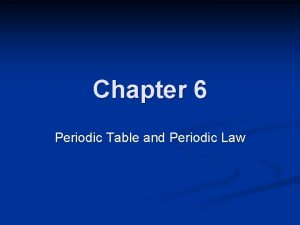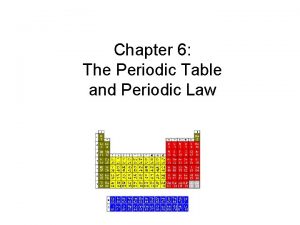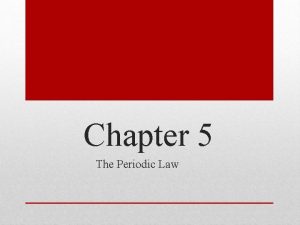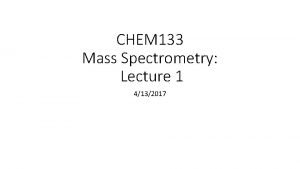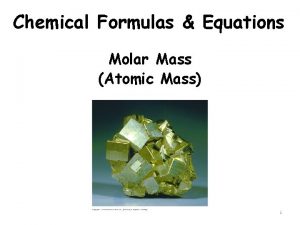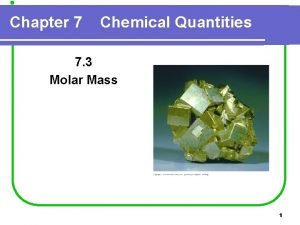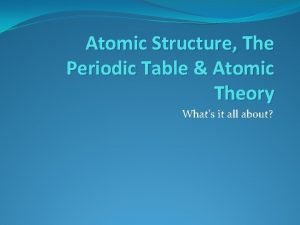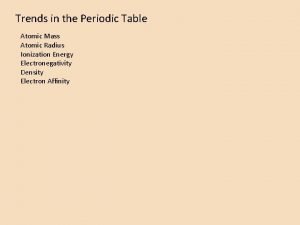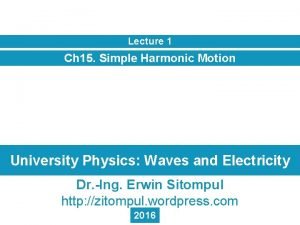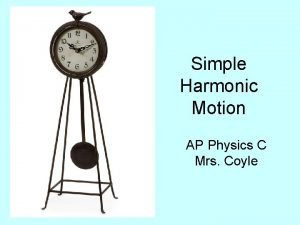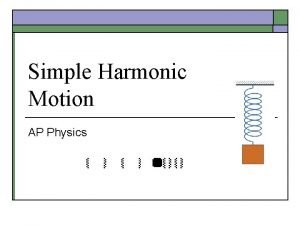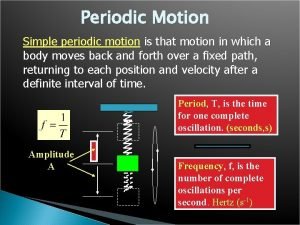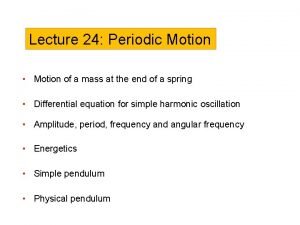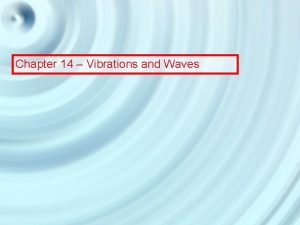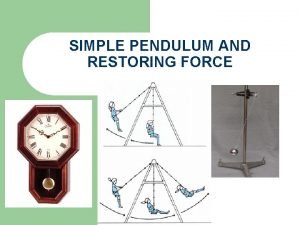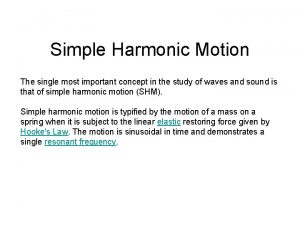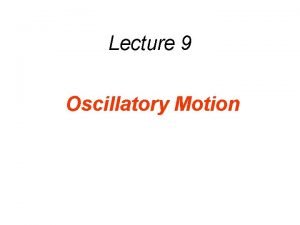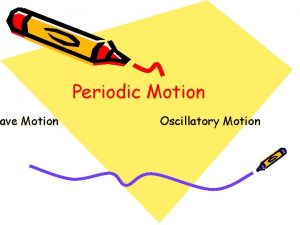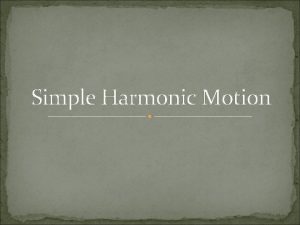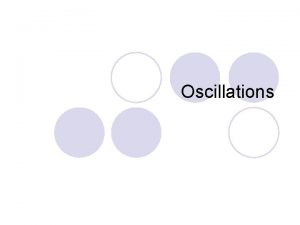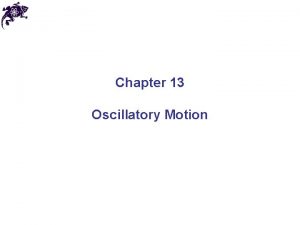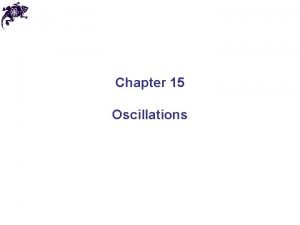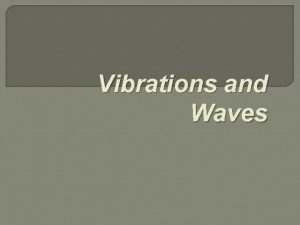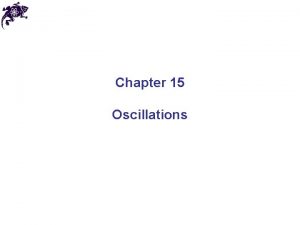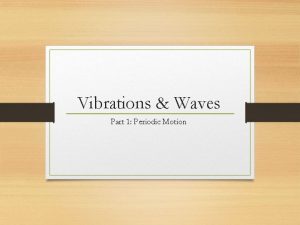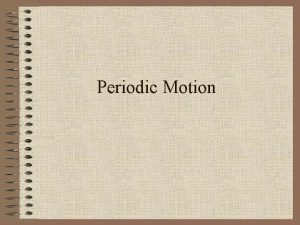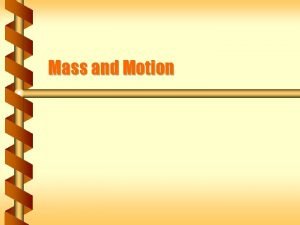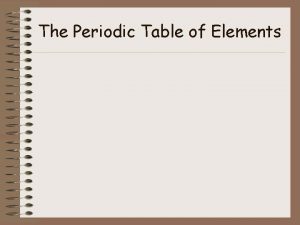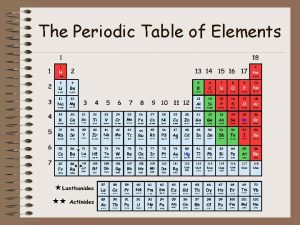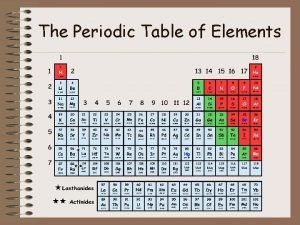Lecture 24 Periodic Motion Motion of a mass

























- Slides: 25

Lecture 24: Periodic Motion • Motion of a mass at the end of a spring • Differential equation for simple harmonic oscillation • Amplitude, period, frequency and angular frequency • Energetics • Simple pendulum • Physical pendulum

Mass at the end of a spring Linear restoring spring force

Spring force

Differential equation of a SHO * Differential equation of a Simple Harmonic Oscillator Angular frequency *We can always write it like this because m and k are positive

Solution General solution: Equation for SHO

Amplitude A = Amplitude of the oscillation

Phase Constant If φ=0: To describe motion with different starting points: Add phase constant to shift the cosine function


Initial conditions

Position and velocity

Simulation http: //www. walter-fendt. de/ph 14 e/springpendulum. htm

Period angular frequency

Effect of mass and amplitude on period

Energy in SHO

Kinetic and potential energy in SHO http: //www. walter-fendt. de/ph 14 e/springpendulum. htm

Example A block of mass M is attached to a spring and executes simple harmonic motion of amplitude A. At what displacement(s) x from equilibrium does its kinetic energy equal twice its potential energy?

SHO General solution: Equation for SHO

Simple Pendulum

Simple Pendulum T does not produce a torque, since the line of action goes through point P

Simple pendulum oscillations Differential equation of simple harmonic oscillator Demo: Simple pendulum with different masses, lengths and amplitudes

Demo: Simple pendulum with different masses, lengths and amplitudes • Period independent of mass • Period independent of amplitude

Physical Pendulum SHO

Motion of the Physical Pendulum SHO I is moment of inertia about axis P D is distance between P and CM Parallel axis theorem: Demo: Meter stick pivoted at different positions


Example A uniform disk of mass M and radius R is pivoted at a point at the rim. Find the period for small oscillations.
 01:640:244 lecture notes - lecture 15: plat, idah, farad
01:640:244 lecture notes - lecture 15: plat, idah, farad 6 the periodic table
6 the periodic table Periodic trends of elements
Periodic trends of elements 15/999 mass street periodic table, o 8
15/999 mass street periodic table, o 8 Chapter 6 periodic table
Chapter 6 periodic table The periodic table and periodic law chapter 6
The periodic table and periodic law chapter 6 Mass spectrometry lecture
Mass spectrometry lecture Periodic table with molecular masses
Periodic table with molecular masses Molar mass
Molar mass Facts about electrons
Facts about electrons Atomic mass periodic trend
Atomic mass periodic trend Slidetodoc
Slidetodoc Simple harmonic motion lecture
Simple harmonic motion lecture Harmonic equation physics
Harmonic equation physics Simple periodic motion
Simple periodic motion Simple harmonic motion
Simple harmonic motion What is periodic motion
What is periodic motion Motion periodic table
Motion periodic table Periodic motion
Periodic motion Periodic motion definition
Periodic motion definition Definition of periodic motion
Definition of periodic motion Simple harmonic motion formulas
Simple harmonic motion formulas Two examples of periodic motion
Two examples of periodic motion Mass to mass equation
Mass to mass equation Mass number vs atomic mass
Mass number vs atomic mass Relative formula mass of hcl
Relative formula mass of hcl

